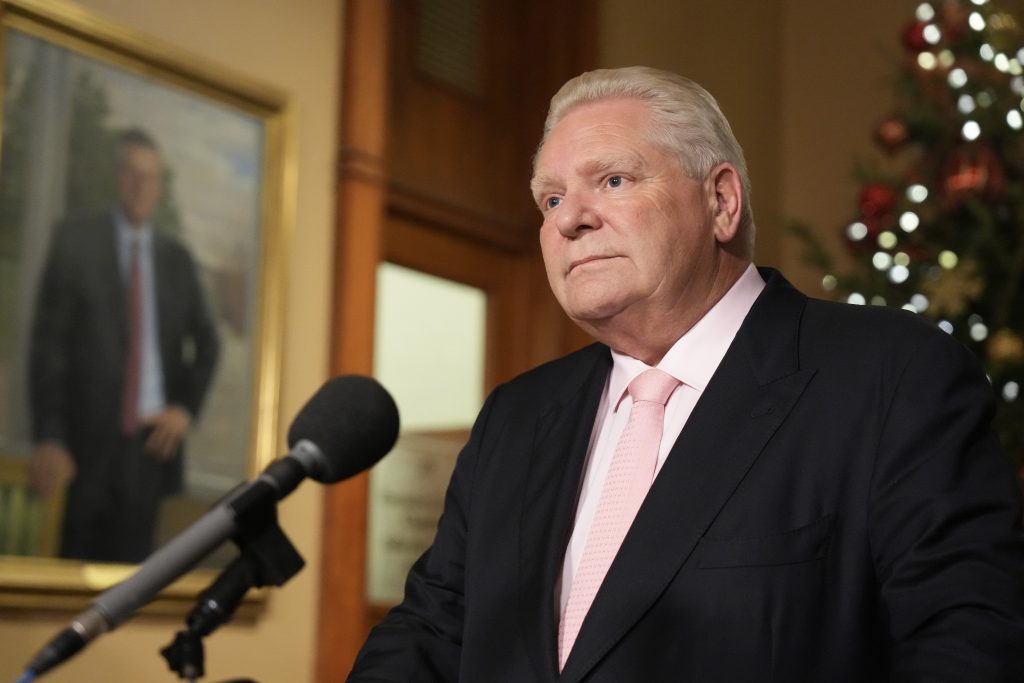Canada’s capital region reeling after intense tornadoes rip through communities
Posted September 22, 2018 8:12 am.
Last Updated September 22, 2018 11:48 pm.
This article is more than 5 years old.
Environment Canada has confirmed that two tornadoes touched down in Ottawa on Friday.
The first was created by a severe thunderstorm and tracked over Kinburn, Dunrobin and Gatineau between approximately 4:40 p.m. and 5:20 p.m. The second tornado was generated by a separate thunderstorm cell in the neighbourhood of Arlington Woods around 6 p.m.
Parts of Ottawa were still reeling Saturday after the powerful tornadoes carved paths of destruction through residential neighbourhoods — snapping huge trees, tossing cars and obliterating homes along its way.
The tornadoes inflicted heavy damage late Friday as they churned across pockets of Ottawa’s west and south ends, as well as densely populated sections of the neighbouring Quebec city of Gatineau.
The storm’s bite continued to be felt across a wide swath of the region many hours later, with more than 150,000 customers still without power Saturday afternoon. Hydro Ottawa CEO Bryce Conrad compared the magnitude of the damage to the power grid to the debilitating ice storm of 1998.
The human toll was also significant. Authorities said dozens of people suffered injuries, however there were no reports of fatalities or of missing people.
The Ottawa Hospital tweeted that two people were in critical condition, one was in serious condition and two others were stable. Officials established shelters for those who couldn’t return home and they said crisis counselling would be available.
On the north side of the Ottawa River, Gatineau Mayor Maxime Pedneaud-Jobin said more than 700 of his citizens were impacted by the storm and about 100 people took refuge in a shelter Friday night at a local college. More than 215 buildings suffered damage or were destroyed in his city — affecting a total of 1,686 housing units, he added.
In areas lashed by the tornadoes, scenes of the havoc were everywhere. The winds tore the roofs from numerous large buildings, bounced large sections of metal bleachers across soccer fields, knocked over hydro poles and cracked thick trees like twigs.
“It looked like it was something from a movie scene or a war scene,” Ottawa Mayor Jim Watson told reporters Saturday recalling what he saw in the area of Dunrobin, where some 60 buildings were wiped out or partially destroyed.
“Literally, it looks like some bomb was dropped from the air.”
Related:
TIMELINE: Canada’s most notable tornado events over the years
Much of Dunrobin, a semi-rural community about 35 kilometres west of downtown Ottawa, remained cordoned off by police Saturday afternoon.
It was eerily quiet inside the police perimeter of one of Dunrobin’s most-damaged neighbourhoods — and only a few trees were still standing. Personal items were strewn everywhere — a baby blanket, a life jacket, mattresses, lawn mowers, a fridge, a kitchen sink lying on the grass and even a love seat wrapped around a telephone pole.
A car, windows shattered, lay on its side in front of a house. Fluffy, pink insulation — sucked out of ravaged homes — covered the neighbourhood.
Looking at one house, the blue sky could be seen through an open door. Its roof had vanished.
Some houses had nothing left at all and lay flat on the ground, covering their vehicles.
Officials warned people not to re-enter their homes until they had been deemed safe as firefighters went door-to-door to determine whether structures were still sound. In Dunrobin, authorities said many buildings that had emerged from the tornado partially intact would likely have to be torn down.
Conrad informed people in the Ottawa area to brace for a multi-day power outage following what he described as a “cascading failure” of hydro resources.
“Last night’s storm was devastating to our electrical infrastructure, arguably as bad if not worse than the ice storm in 1998,” Conrad told reporters.
He said there were 200 separate outages across the Hydro Ottawa network and 147,000 customers without power. Hydro Ottawa only serves some of the people left without power because of the tornado.
To put it into perspective, Conrad said the electrical load that comes into Ottawa on any given day this time of year is about 1,000 megawatts. The storm took away about 400 megawatts from the supply.
“That’s what we’re working with — that’s why we are dark,” he said, listing off communities around the western, southern and some central parts of Ottawa.
Environment Canada confirmed Saturday that indeed two tornadoes struck the capital region. One clocked wind speeds of up to 265 kilometres per hour which would correspond with an EF3 category tornado. The second had wind speeds of up to 220 kilometres an hour, corresponding with an EF2 category tornado.
Ontario Premier Doug Ford said he would be visiting the Ottawa area on Sunday.
“We’re going to do whatever it takes to help them get back on their feet, Ford told a crowd gathered Saturday night for his annual Ford Fest barbecue in Vaughan, Ont.
“Tonight I want to let the people of Ottawa know that we’re all thinking of you,” said Ford, who also thanked first responders and hydro crews. “We want you to know that the entire province stands with you and is praying for you tonight.”
Prime Minister Justin Trudeau said on Twitter that he had spoken to the mayors of Ottawa and Gatineau and offered federal help with the storm recovery.
“We’re with you,” Trudeau tweeted.
In Gatineau, leaders of major political parties took a pause from the province’s ongoing election campaign to visit areas walloped by the tornado.
Setting aside their political differences, Liberal Leader Philippe Couillard and Parti Quebecois Leader Jean-Francois Lisee visited one of the most devastated parts of Gatineau together. Coalition Avenir Quebec Leader Francois Legault and Manon Masse, a co-spokesperson for Quebec solidaire, were scheduled to arrive in the area later Saturday.
“It’s so surprising and terrible to see the disaster the way it struck the homes,” said Couillard, as he toured Pontiac, Que.
Couillard added he was moved when he heard a story about a man in the community who had built his house with his own hands.
“And it’s completely vanished, almost completely vanished.”
Those with power were stepping up Saturday to help strangers with a hot meal, an outlet to charge their phone or a shower.
Shawna Tregunna tweeted a photo of pancakes saying she was cooking up hot meals all day.
“Come shower, eat, charge your devices, I don’t need to know you, you don’t need to ask, show up (bring Tupperware and I’ll fill it up) and you will be welcome,” Tregunna tweeted along with her address.
She also offered to deliver food.
Tregunna wasn’t alone.
Another Ottawa resident, Erin Blaskie, tweeted out a photo of a pot of chili saying anyone without a hot meal could message her for her address.
In Kanata North, Karen Woods opened up her home to people who needed a shower or their batteries recharged.
On Saturday night, Ontario announced it was activating the province’s Disaster Recovery Assistance program in areas affected by the storm.
Under the program, affected individuals, small businesses and not-for-profit organizations that have experienced property damage or loss as a result of the storm may be eligible to receive help with emergency and recovery expenses.
“I want to assure the residents of Ottawa that our government is working closely with our municipal partners to activate the province’s Disaster Recovery Assistance program where it will be needed,” Municipal Affairs and Housing Minister Steve Clark said in a release.








